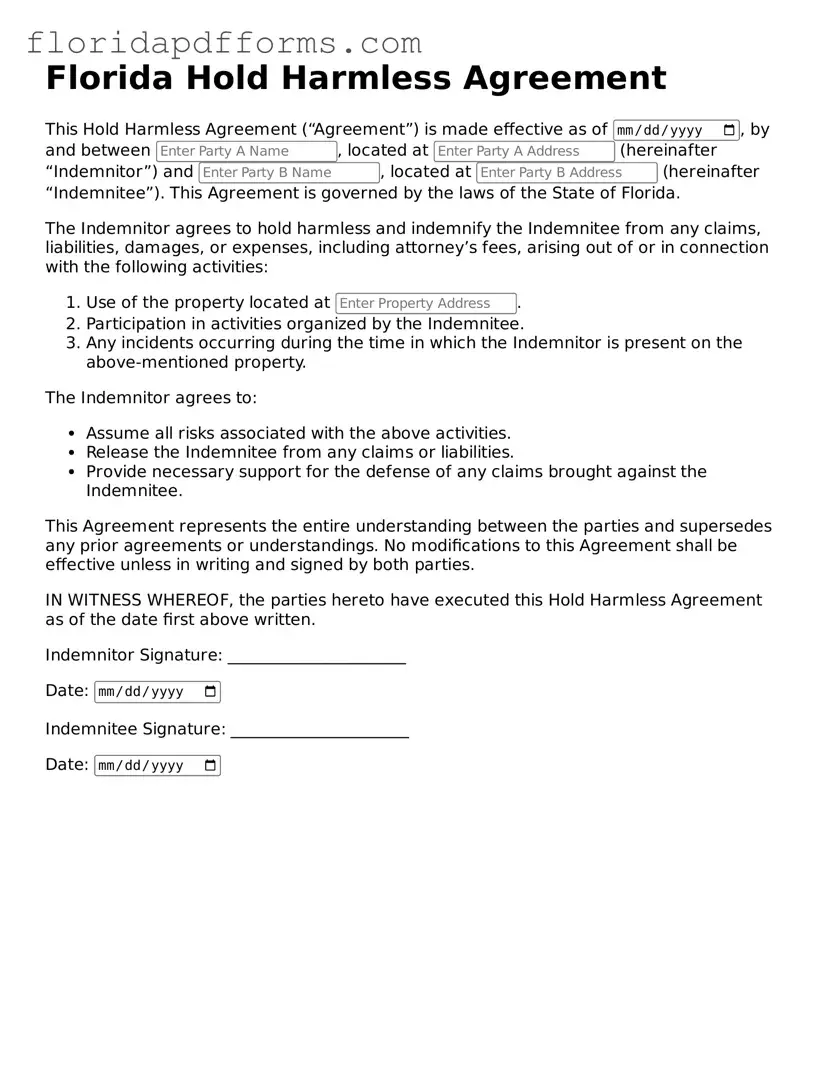Official Hold Harmless Agreement Template for Florida
The Florida Hold Harmless Agreement form is a legal document designed to protect one party from liability for any damages or injuries that may occur during a specific activity or event. This agreement ensures that participants acknowledge the risks involved and agree not to hold the other party responsible. Understanding this form is crucial for anyone engaging in activities that could potentially lead to legal disputes.
To get started, fill out the form by clicking the button below.
Modify Hold Harmless Agreement Now
